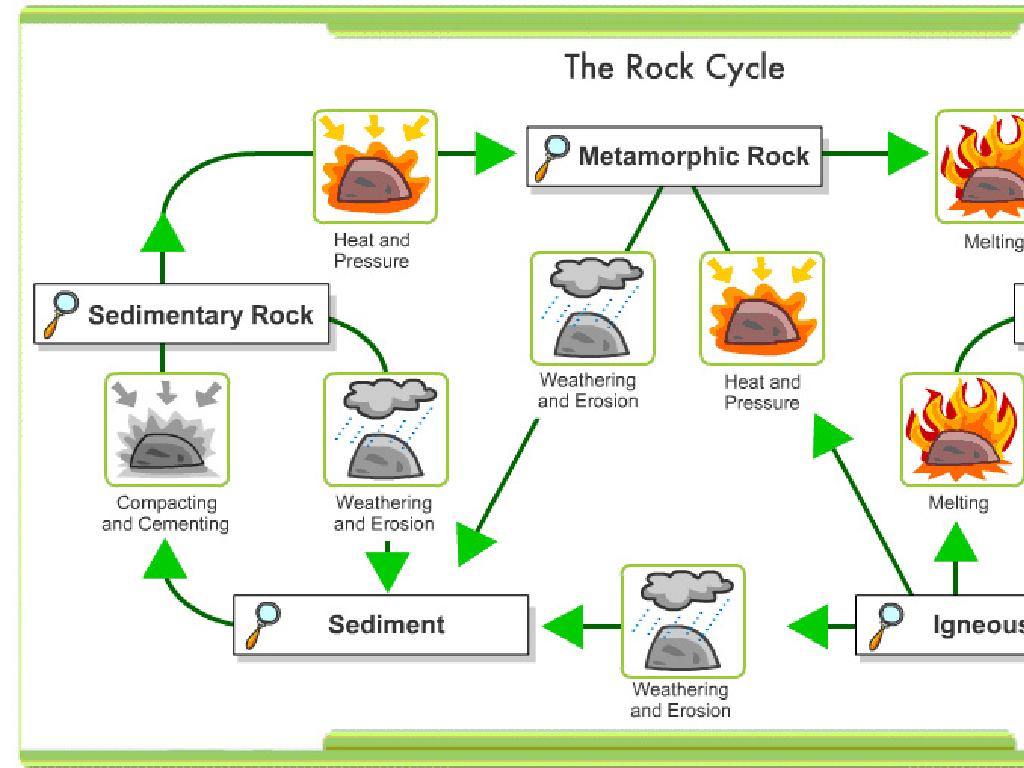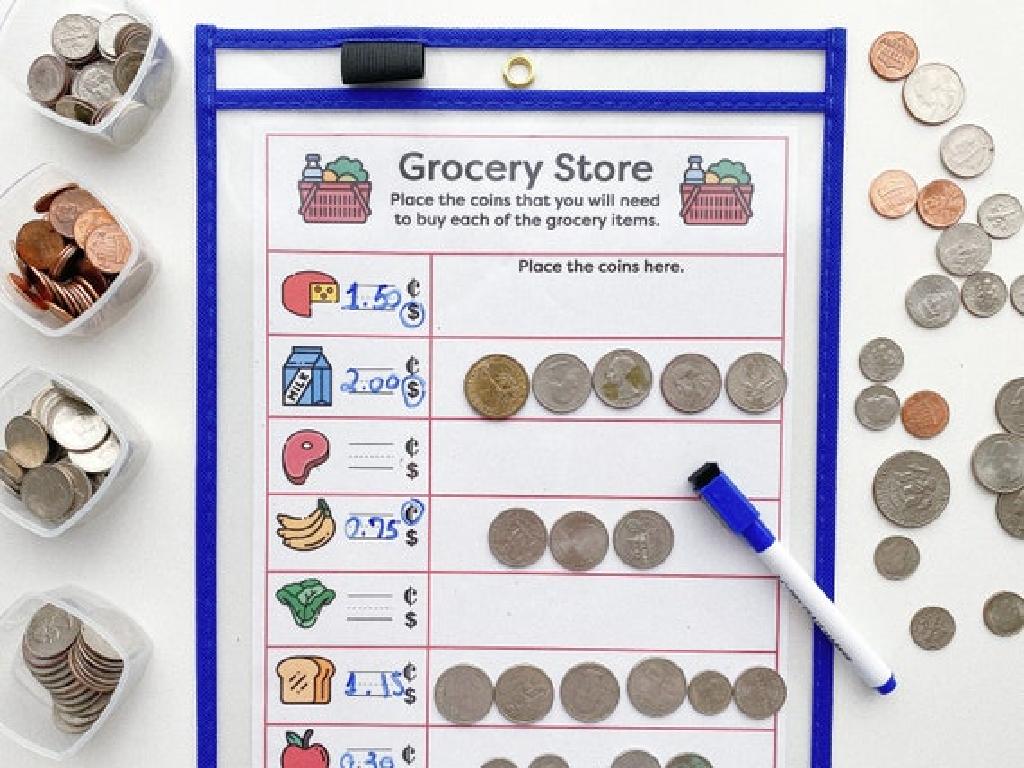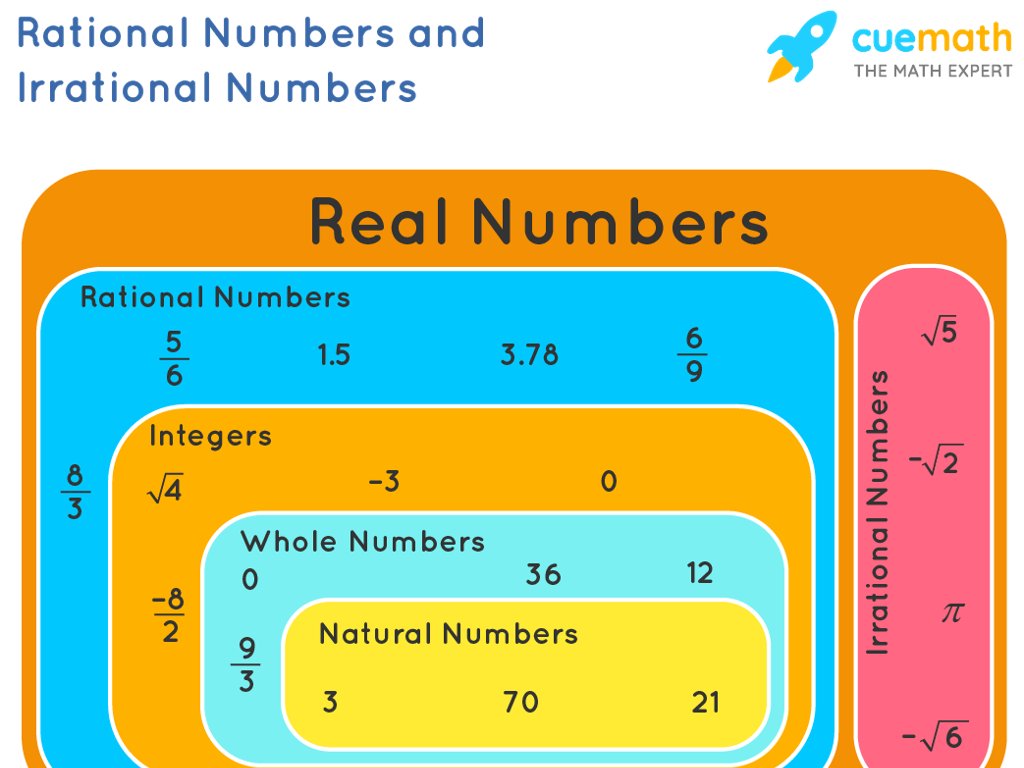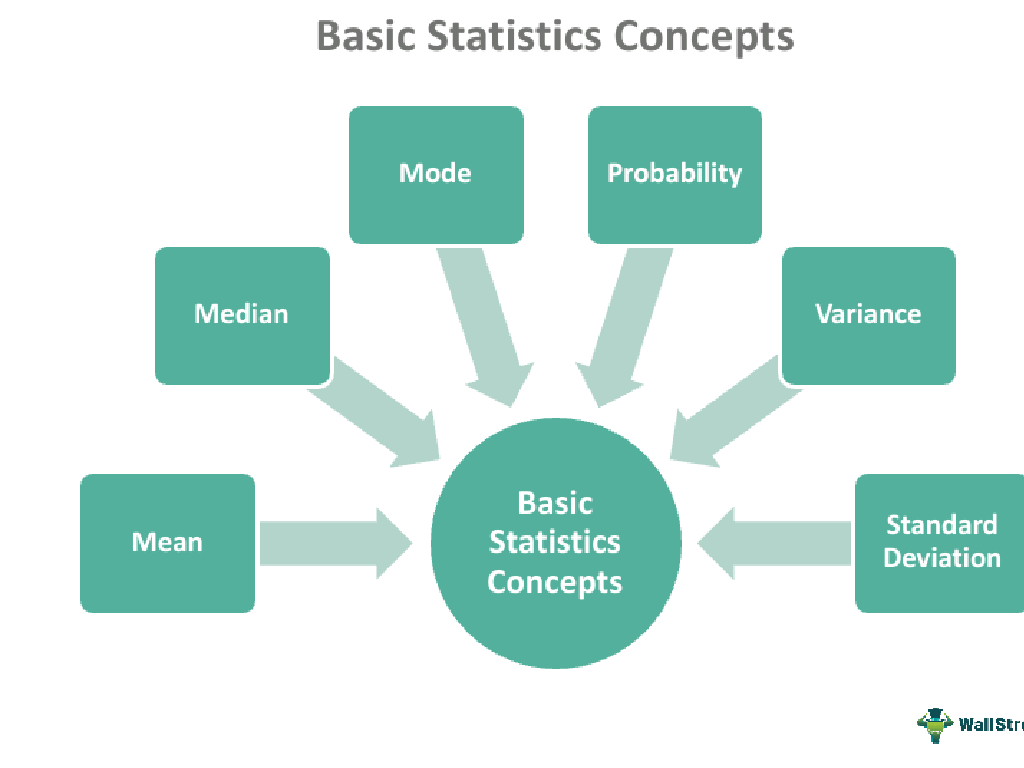Multiply 2-Digit Numbers By Larger Numbers
Subject: Math
Grade: Fifth grade
Topic: Multiplication
Please LOG IN to download the presentation. Access is available to registered users only.
View More Content
Mastering Multiplication: Beyond the Basics
– Review basic multiplication facts
– Multiplication as repeated addition
– If you have 4 groups of 3 apples, that’s 3+3+3+3 or 4 times 3
– Significance of multiplication in daily life
– Helps in budgeting, cooking, and planning events
– Strategies for multiplying larger numbers
– Break down larger numbers into smaller, manageable parts
|
Begin with a quick review of multiplication tables to refresh students’ memory. Emphasize understanding multiplication as repeated addition, which lays the foundation for grasping larger number multiplication. Discuss real-life scenarios where multiplication is essential, such as calculating expenses, preparing recipes, or organizing seating for an event. Introduce strategies for multiplying larger numbers, such as breaking them into smaller parts, to make the process less intimidating. Provide examples and practice problems to solidify these concepts.
Multiplying 2-Digit Numbers
– Understanding 2-digit numbers
– Numbers from 10 to 99
– Examples of 2-digit numbers
– Like 23, 58, and 84
– Steps for single-digit multiplication
– Align, multiply, carry, and add
– Practice with examples
– Multiply 7 by 24: 7×4=28, carry 2; 7×2=14+2=16; Answer: 168
|
This slide introduces the concept of multiplying 2-digit numbers by larger numbers. Begin by explaining what 2-digit numbers are, providing examples to ensure students are comfortable with the concept. Then, outline the steps to multiply a single-digit number by a 2-digit number, emphasizing the importance of alignment, carrying over, and adding the results. Use clear examples to demonstrate the process, and encourage students to practice with additional problems to solidify their understanding. This foundational skill is crucial for their success in more complex multiplication tasks.
Multiplying by Larger Numbers
– Understanding 3-digit numbers
– Numbers with hundreds, tens, and ones
– Place value in multiplication
– Each digit has a value based on its position
– Aligning numbers for multiplication
– Stack numbers with ones under ones, tens under tens
– Practice with examples
– Use example: 123 x 56, align and multiply step by step
|
This slide introduces students to the concept of multiplying 2-digit numbers by larger numbers, starting with an understanding of 3-digit numbers and their place values. Emphasize the importance of place value as it helps in organizing the multiplication process. Show how to properly align numbers vertically, ensuring that ones, tens, and hundreds are in the correct columns. Provide a clear example on the board, such as 123 x 56, and solve it step by step, demonstrating the process of multiplication. Encourage students to practice with additional examples and to check their work by verifying that the numbers are aligned correctly before multiplying.
Multiplying 2-Digit Numbers by Larger Numbers
– Learn the standard multiplication algorithm
– A set method to multiply numbers step by step
– Multiply each digit of the larger number
– Start with the ones place, then tens, and so on
– Line up the results correctly
– Each new line should be shifted based on place value
– Add the results for the final answer
– Carefully add the numbers, ensuring columns are aligned
|
This slide introduces the standard algorithm for multiplication, which is a cornerstone of arithmetic. Begin by explaining the step-by-step process, ensuring students understand the importance of place value. Demonstrate how to multiply each digit of the larger number by the 2-digit number, emphasizing the need to multiply each place separately and write the results one below the other, shifting as necessary for tens, hundreds, etc. Finally, show how to add these results together to get the final answer. Use examples with different place values to illustrate the process clearly. Encourage students to practice with problems of varying difficulty to solidify their understanding.
Multiplying 2-Digit Numbers by Larger Numbers
– Walk through a detailed example
– Example: 34 x 56. Start with ones place, then tens.
– Discuss the importance of each step
– Understanding each step ensures accuracy.
– Highlight common multiplication mistakes
– Mistakes like misalignment or wrong place value.
– Tips to avoid errors
– Double-check work, practice lining up numbers.
|
This slide is aimed at demonstrating the process of multiplying 2-digit numbers by larger numbers. Begin with a step-by-step walkthrough of an example problem, such as 34 multiplied by 56, emphasizing the multiplication of each digit in the ones place followed by the tens place. Discuss the rationale behind each step to reinforce the concept of place value and alignment in the process. Highlight common errors such as misalignment of numbers or mistakes in carrying over numbers. Provide tips such as double-checking work and practicing the alignment of numbers to help students avoid these errors. Encourage students to ask questions and to try similar problems to solidify their understanding.
Multiplication Mastery: Practice Problems
– Solve problems together as a class
– Explain your problem-solving process
– How did you decide to multiply the numbers? Share your strategy.
– Tackle problems of varying difficulty
– Start with easier examples, then gradually increase complexity.
– Collaborate and learn from peers
– Discuss solutions and different approaches with classmates.
|
This slide is designed to engage the entire class in a collaborative problem-solving activity focused on multiplying 2-digit numbers by larger numbers. Start with simpler problems to ensure all students grasp the concept, then introduce more challenging problems to stretch their understanding. Encourage students to articulate their thought process as they solve each problem, which reinforces their learning and helps others. Differentiate the problems based on difficulty to cater to varying skill levels within the class. Facilitate group discussions where students can compare their methods and learn from each other. Provide guidance and support as needed, and ensure that each student is actively participating and gaining confidence in their multiplication skills.
Interactive Multiplication Activity
– Pair up for multiplication practice
– Solve assigned problems together
– Present your strategy to the class
– Share how you multiplied the numbers
– Vote on the most efficient method
– Think about speed and ease of understanding
|
This interactive activity is designed to encourage collaboration and critical thinking among students as they practice multiplying 2-digit numbers by larger numbers. Each pair of students will work together to solve assigned multiplication problems, allowing them to discuss and compare different strategies. After solving their problems, pairs will present their multiplication method and solution to the class, explaining their thought process. The class will then vote on which strategy they found to be the most efficient, considering both the speed of the method and how easy it was to understand. This activity not only reinforces multiplication skills but also promotes peer learning and discussion. As a teacher, facilitate the activity by ensuring each pair has a different set of problems, guide the presentations to stay focused, and help the class reflect on the efficiency of each method after the vote.
Homework and Wrapping Up Multiplication
– Practice with homework problems
– Review today’s key multiplication concepts
– Remember to line up numbers correctly and multiply each digit
– Ask questions if you’re unsure
– Use extra resources for more help
– Check out online games and worksheets for more practice
|
As we conclude today’s lesson on multiplying 2-digit numbers by larger numbers, assign homework that includes a variety of problems to reinforce the concepts learned. Summarize the lesson by highlighting the importance of lining up the numbers correctly and the process of multiplying each digit. Encourage students to ask questions if they have any doubts. Provide additional resources such as online games, worksheets, and tutoring sessions for students who may need extra help. Remind them that practice is key to mastering multiplication and that these resources are there to support their learning journey.
Class Activity – Multiplication Bingo
– Distribute bingo cards with problems
– Call out multiplication products
– First to complete a row wins
– Celebrate with a prize
|
This interactive class activity is designed to reinforce the concept of multiplying 2-digit numbers by larger numbers. Prepare bingo cards in advance, each filled with a variety of multiplication problems involving 2-digit numbers. During the activity, call out the products of these multiplication problems. Students will need to solve the problems on their cards and mark the answers. The first student to complete a row (horizontal, vertical, or diagonal) should shout ‘Bingo!’ and be awarded a small prize. This game encourages quick thinking and application of multiplication skills. Possible variations of the activity could include having different patterns to complete, such as ‘four corners’ or ‘full house’, to keep the game engaging and to provide multiple chances to win.






